-
HOMEARC Site Home
-
NEWSLatest Update
News

News Archives
-
TIMEAbout the Schedule
Key Dates

Look out for the important dates before the conference and be aware of the registration...
About the Schedule

Check the schedule of the 4 days conference, from day to night...
-
MULTIMEDIAPlay, View, Download
-
JOINRegister Accommodate
Register

How to register the conference? Check the details here and proceed with the registration...
Accommodation

Three selected hotels minutes to the conference venue. Check the details and room rate here...
Social Programme
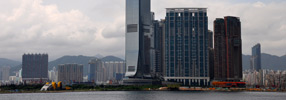
Social Programme available during the Conference period, including Opening and Closing Ceremony...
Tour Programme
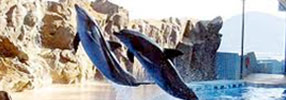
Three tours available for accompanying persons to discover the attractions of Hong Kong...
-
KNOWIntroducing the Hosts
About ARF & ARC
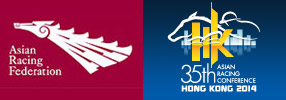
The Asian Racing Conferences are a global racing forum organized by the Asian Racing Federation (ARF)...
Milestones

Racing in Asia has a long and rich history. Learn more about this history and the role played by the ARCs...
HKJC the host
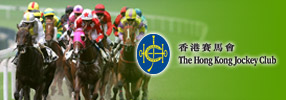
The Hong Kong Jockey Club is not only one of the world's leading horse racing organisations but also...
Discover Hong Kong

As Asia's world city, Hong Kong has much to offer to its visitors...
- EXHIBITION
Participate in Exhibition - EXHIBITION
News
Hong Kong Jockey Club’s model for success outlined at Asian Racing Conference’s ‘Industry Profiles’ session
07/05/2014
The latest session of the 35th Asian Racing Conference this afternoon at the Hong Kong Convention and Exhibition Centre informed delegates that Hong Kong horseracing is looking ahead with confidence as customer participation and turnover continue to grow, while in Japan, the JRA (Japan Racing Association) is innovating to offset the effects of a “greying society”.
-
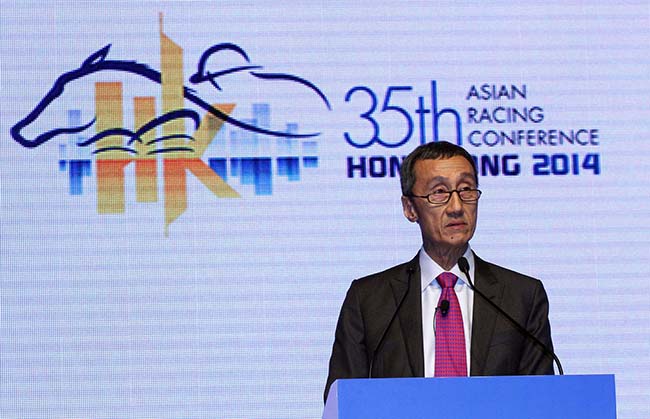 Panel Chairman Yu Pang Fey, President and Chief Executive of the Singapore Turf Club, speaks in the session about the development of horse racing industry in Singapore.
Panel Chairman Yu Pang Fey, President and Chief Executive of the Singapore Turf Club, speaks in the session about the development of horse racing industry in Singapore.
In a series of video presentations, New Zealand, Malaysia, Macau and Korea also came under the spotlight during the session, which was chaired by Yu Pang Fey, President and Chief Executive of the Singapore Turf Club and CEO of the Malayan Racing Association.
Mr William A. Nader, the Hong Kong Jockey Club’s Executive Director of Racing outlined the ‘Hong Kong Racing Model’, and told delegates of HKJC’s ongoing and future initiatives.
Since the 2009/10 season, the Club’s ongoing Racecourse Master Plan, with HK$3.5B spent to date and further significant investment to follow, has revamped infrastructure, with its customer-centric approach to venue re-development reaping rewards in terms of increased attendances, including new generation racegoers, and strong betting turnover.
“The defining trait of the Hong Kong Jockey Club is outstanding customer service and public confidence is imperative when you look at the wagering levels in Hong Kong,” said Mr Nader. “We are making more investment to 2017/18 in our on-going Master Plan.”
Meanwhile, HKJC’s Conghua Training Centre is being built in mainland China, and recent legislation has enabled the Club to begin commingling with overseas pools.
Mr Nader emphasised the strength of Hong Kong racing, noting that five of Hong Kong’s six international Group 1 races are established in the International Federation of Horseracing Authorities’ World’s Top 50 Group 1 Races.
In explaining the Hong Kong model, Nader told those present that a fundamental component is its not-for-profit structure, which in 2012/13 enabled the Club to provide HK$1.95 billion in charitable donations to the Hong Kong community, double the amount seen 10 years before. He told delegates that, as Hong Kong’s biggest charity benefactor, HKJC supported 160 charitable and community initiatives last season.
He also explained the Membership and Ownership experience, where demand for horse ownership far exceeds supply; the Club’s employment of 5,700 full-time and 18,000 part time staff; its 7,000 hours of in-house TV output per season; HKJC’s world-class racing laboratory; and the public’s confidence in Hong Kong racing thanks to the Racing Control Department’s emphasis on integrity and transparency.
Aki Akitani, the senior technical advisor of the Business Strategy Planning Department of the JRA, told delegates of Japanese racing’s strategy to counteract the effects of an ageing population and a shrinking share of the leisure market. The JRA, he said, is targeting “customer clusters” with a scheme to attract single ladies. Current figures, he said, show that 60% of women in their late 20s in Japan are single, compared to 20% in 1970, leading the JRA to launch its UMAJO (Horse Ladies) project.
“Historically in Japan, the main trend setters in our society are young females, and of course, boys follow,” said Mr Akitani. “Our average female attendance is 14% and we need to increase this ratio. Our goal on Japanese Oaks day this year is to attract 15,000 female customers - 20% of the total expected attendance.”
Mr Akitani, who stressed the difficulties under Japan law of gambling on overseas races and the JRA’s ongoing negotiations with government, also told delegates that the JRA has focused on “pinnacles” – re-packaging only their most attractive contests, the Japan Derby and the Arima Kinen - and “bombarding the public with massive exposure to those contests.” He said that “as a result, the attendance and turnover increased dramatically.”
Greg Purcell, the Chief Executive of New Zealand Thoroughbred Racing, shared a video about the New Zealand racing industry and the key roles it plays as a breeding centre and as an important source of revenue to the country’s economy.
Also addressing the session were Dr Seungho Ryu, the International Racing Manager of the Korea Racing Authority, Thomas Li, the Executive Director and Chief Executive of the Macau Jockey Club, and Tunku Shahabuddin, Chairman of International Relations, at the Selangor Turf Club, Malaysia.
35th Asian Racing Conference – May 7 Photo Gallery
News
- Hong Kong passes the flag to India as historic Asian Racing Conference closes with announcement of HKJC CEO as new Chairman of the Asian Racing Federation
- Racing and breeding in Mainland China discussed for the first time at an Asian Racing Conference
- High-profile speakers call for international cooperation to battle corruption in sport at Asian Racing Conference












